
Redfish fishing covers a lot of territory — both literally (geographically) and figuratively (how it’s done). That’s because redfish (more properly known as red drum) are one of the most popular gamefish of the U.S. Southeast, from Virginia all the way to southern Texas.
This member of Sciaenidae, the family of drums and croakers, can reach upwards of 100 pounds, with the IGFA world record held by a 94-pound, 2-ounce behemoth caught back in 1984 in the Outer Banks surf off Avon, North Carolina.
Of course redfish average a far smaller size. Everyone would like to catch a bull redfish (in the 25- to 40-pound class), and many do, but fish from a few pounds to 10 or so are far more common in more areas, and on light tackle make fabulous sport. Smaller “puppy drum” also make for better eating than older, larger, more coarse adults.

Fishing for redfish is a broad category because they range over such diverse areas, from estuaries and backwaters in a foot or two of water to deeper channels, bays and inlets, to the base of Gulf of Mexico oil rigs in 200 to 300 feet of water far offshore.
Although red drum aren’t flashy when hooked — they don’t jump like tarpon or make the sizzling runs of permit — they give a solid fight, not giving up easily.
Redfish are characterized by their bronze color and ocellated spot on their tail; that might be lacking entirely, or some individuals might have a dozen or more such spots. When young, redfish’s fins and tail can show a brilliant blue on the margins.
How to Catch Redfish
Part of the reason fishing for redfish is so popular has to do with just how many ways it can be — and is — caught by anglers. That includes soaking live or dead baits, throwing or trolling hard lures (crankbaits), spoons or soft plastics. Kayak fishing for redfish, fly fishing for redfish, surf fishing for redfish, shore fishing or wade fishing for redfish are all among popular ways fishermen connect with red drum.

If unfamiliar with an area you want to fish for reds, try asking for advice in a local bait/tackle shop. Also be aware that tides can play a major role in when redfish are present and/or when they’re feeding. The best tide stage will vary according to habitat. Often a flooding tide offers good action as redfish follow the water into shallow areas.
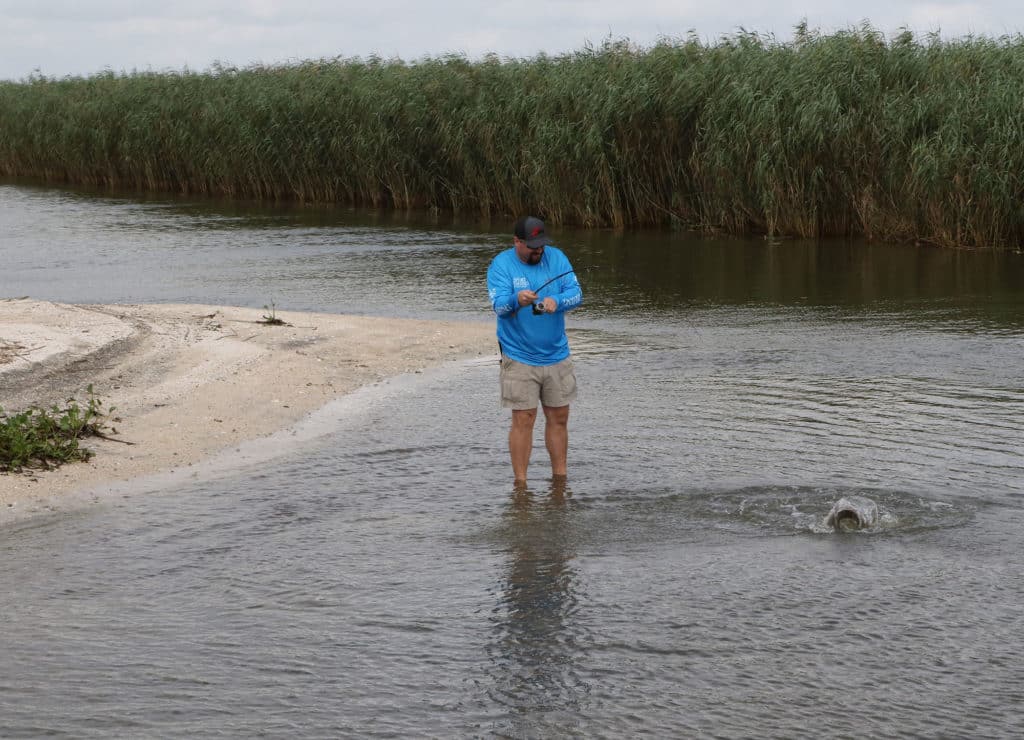
As noted above, all manner of offerings can fool redfish. Probably more redfish are caught on soft-plastic tails on small leadhead jigs or on weedless, weighted worm hooks worked along/just over a sandy or eelgrass-covered bottom will usually take redfish if they’re around.
Often red drum are caught blind-casting lures or still-fishing baits, but sight-casting to redfish is the most exciting technique for them. At times, they may be actively feeding in water so shallow that their tales and even dorsal fins will be sticking prominently above the surface. In slightly deeper water, look for the wakes of moving fish pushing water. When redfish or telltale signs of them are spotted, great caution is required to approach close enough for a cast.

Here, smaller, lighter unweighted or barely-weighted plastic tails are a good bet since their splash when hitting the water is less obtrusive than larger lures and less likely to spook the reds. Cast well beyond and in front of moving fish then quickly pull the lure into their path.
Redfish Rigs and Tackle
In terms of reels and rods for redfish, both spinning and levelwind/baitcast reels and rods are popular wherever anglers fish for redfish. Spinning offers ease of use and may provide longer casts with lighter lures; levewinds have the advantage when it comes to pinpoint casting.

Mono and braid both work well for redfish, though in deeper water where currents run strong, braid has a decided edge, being much thinner than mono.
Typically rigs designed for 10- to 15-pound line work well for redfish fishing.
When it comes to lures for redfish, four or 5-inch paddletails, soft jerkbaits or shrimp imitators, such as those made by Z-Man and Gulp! are hard to beat. White or chartreuse variations have the greatest following among guides.

Various crankbaits such as diving minnows and stickbaits or glidebaits catch lots of reds as do a variety of topwater plugs. “Walkers” find particular favor among surface-lure enthusiasts, but many throw poppers as well.

Weedless spoons offer another proven option, as well as spinnerbaits. The flash of Z-Man’s Chatterbaits can be quite effective in murky water.
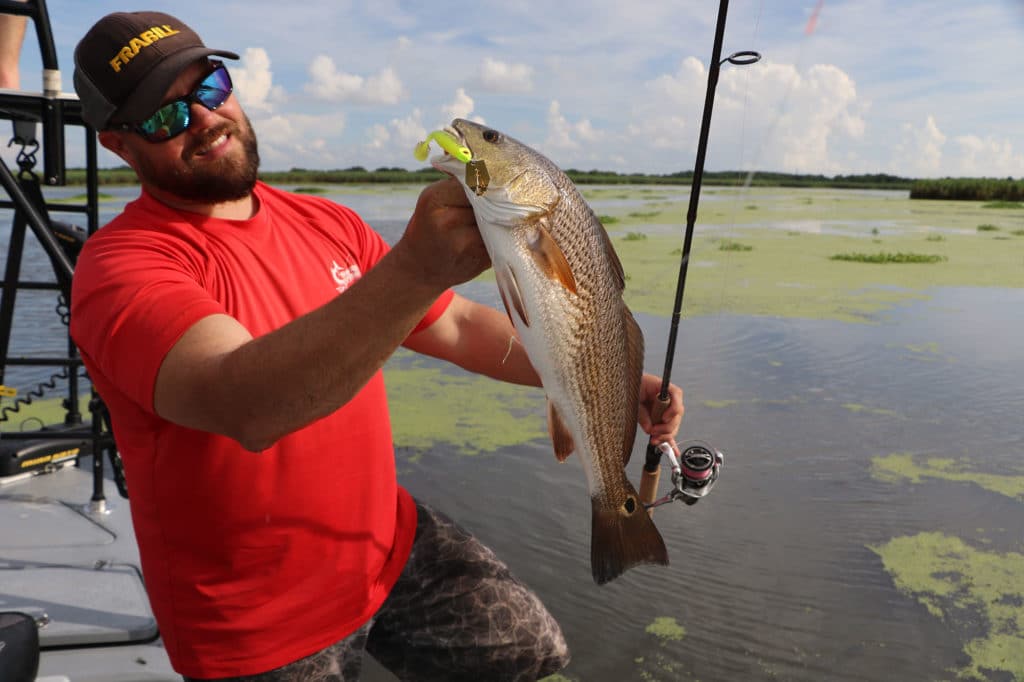
In deeper waters, jigging for redfish can be consistently productive, with metal “slowpitch” jigs worked near bottom.
Redfish aren’t shy about going after bait. Live shrimp probably top the list, but crabs and small live “white baits” such as pilchards can be deadly. Cut mullet soaked on bottom can be a magnet for large redfish.

Where to Catch Redfish
Whether fishing for redfish in Texas or Louisiana or fishing for redfish north in the mid-Atlantic states, throughout their range, nearly every bay and estuary holds redfish, though they still have to be located. Eelgrass flats from 2 to 4 or 5 feet deep are worth drifting bait or blind-casting lures.
Also, in inside waters, redfish the structure offered by barnacle-covered bridge pilings and around docks. The Mississippi coast is strewn with artificial reefs, often quite near shore, where red drum are likely to stack up.
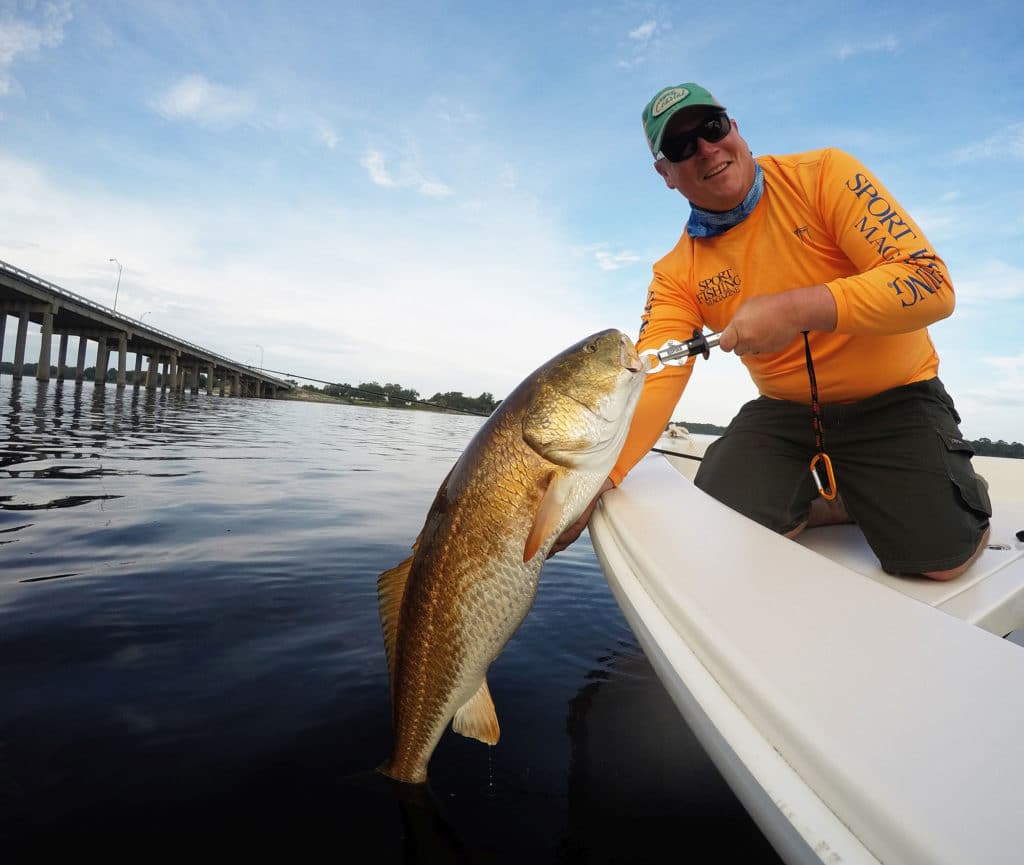
Anglers fishing for redfish in Louisiana and western Mississippi have thousands of acres of quintessential redfish habitat known as “the marsh.” The productive waters around roseau cane and oyster bars can be tricky to navigate but the payoff may be memorable. In the fall, fishing for bull redfish in the marsh may offer monsters on a consistent basis.
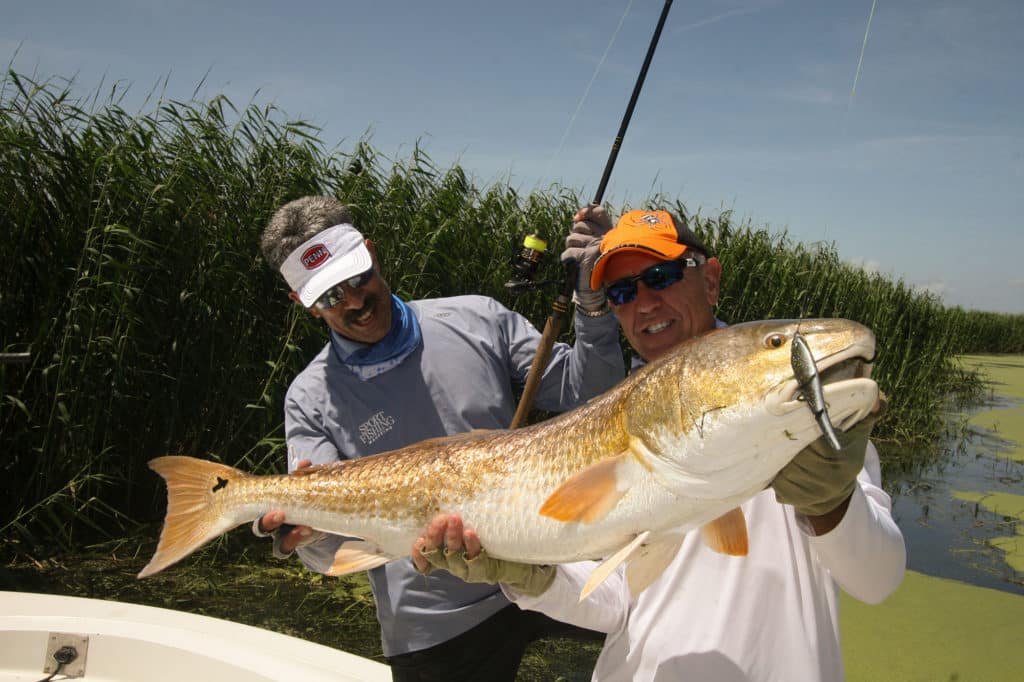
Don’t overlook inlets for redfish fishing. At various times during the year, they can be redfish magnets, with currents delivering food to waiting, often large redfish. Certainly, in terms of safety, this fishing requires a vigilant helmsman, but the rewards can be substantial.
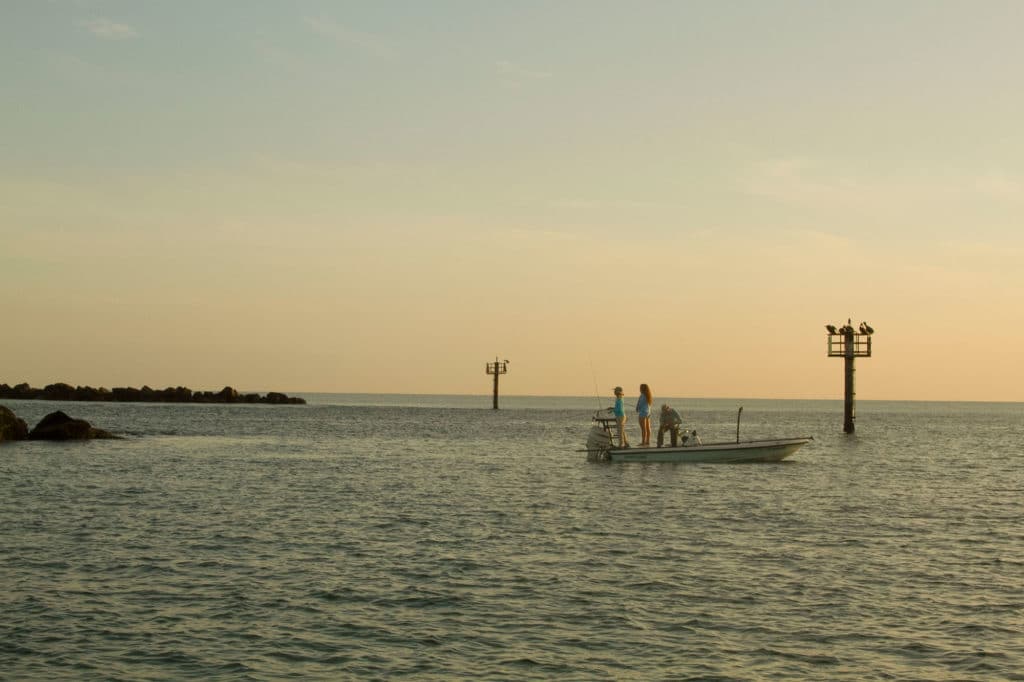
At times, large schools of bull reds will be found offshore — sometimes just off the beach or up to a mile or two or farther out. Such schools may appears at the surface as acres of red, and at such times will fight over the chance to strike even a bare hook.
It’s not accurate to say of redfish fishermen that no matter where they go they’ll catch reds, but it’s fair to say along the entire Gulf and South Atlantic seaboards, no matter where one goes, there are likely to be redfish around to be caught.








